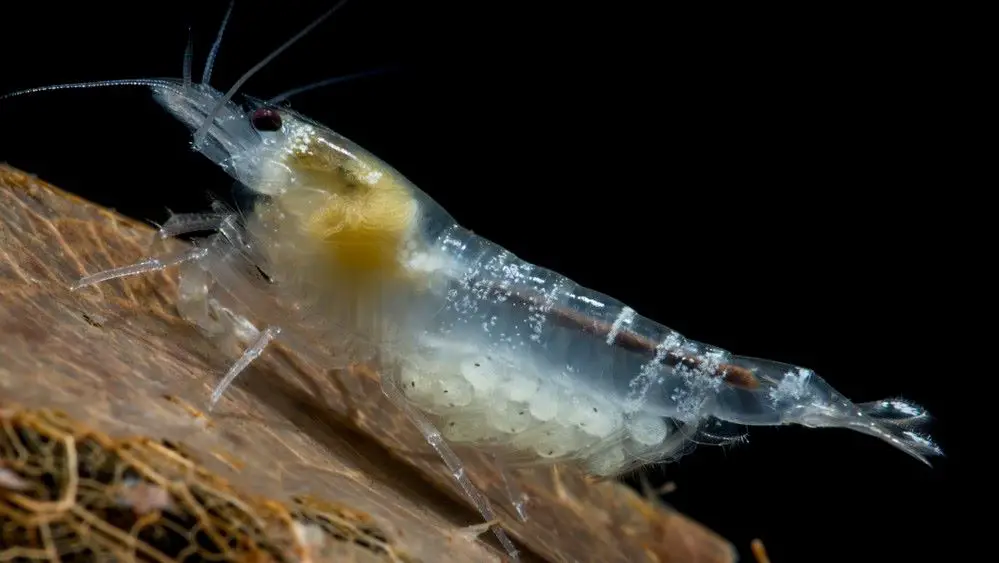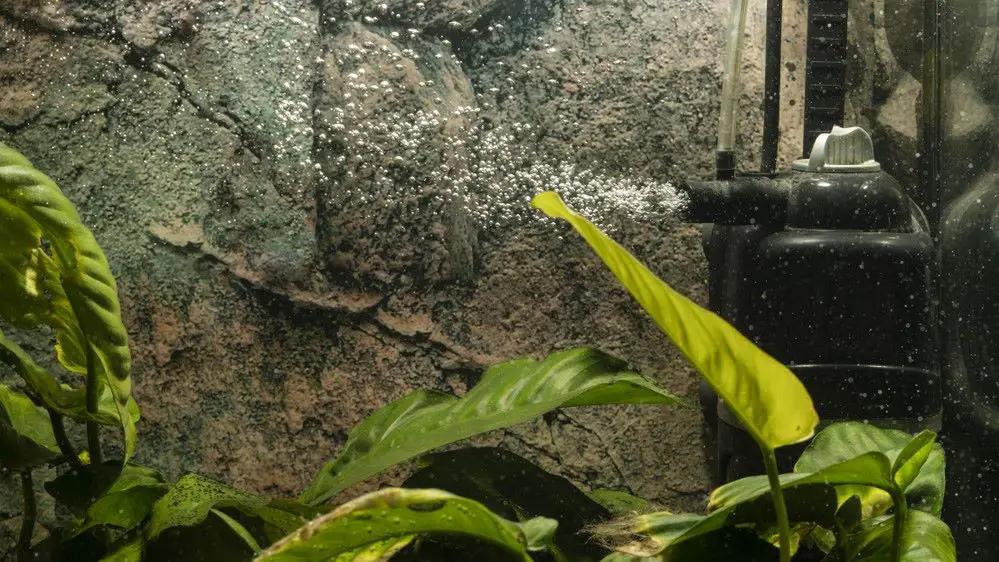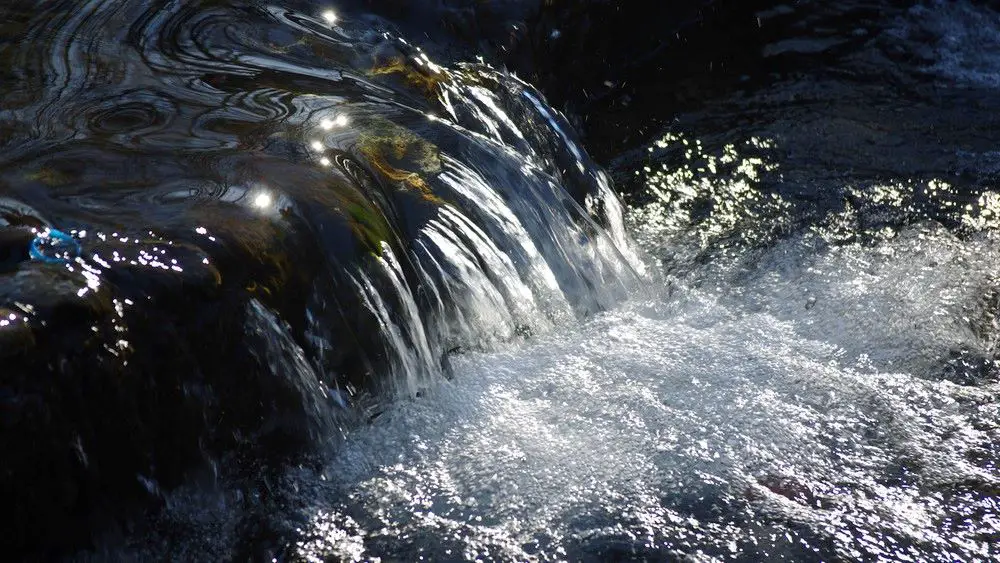Are your shrimp less active, or certain areas of your tank not as clean as they should be? These could be signs that the water flow in your tank is not optimal. Water flow in a shrimp tank is more than just about keeping the water moving. It plays a crucial role in the overall health of your shrimp and the cleanliness of your tank.
The ideal water flow in a shrimp tank is a gentle flow, around a cm per second. This ensures that clean, oxygenated water reaches every tank corner, preventing stagnation and helping your filtration system work more effectively.
As a shrimp keeper, I’ve spent countless hours observing my little aquatic friends, trying to create the perfect environment for them. Over the years, one aspect that I’ve found to be crucial, yet often overlooked, is the water flow in the tank.
After some research and a few trials and errors, I discovered the importance of maintaining a gentle water flow in the tank. It was like a light bulb moment! The flow of water was not just about creating a visually pleasing effect, but it played a vital role in keeping the tank clean and the shrimp healthy.
Coming up we’ll dive deeper into the importance of water flow in a shrimp tank, how to measure it, and the impact it has on your shrimp’s health and the overall tank environment. So, whether you’re a seasoned shrimp keeper or a newbie, stick around, and let’s embark on this enlightening journey together.
How does water flow affect shrimp reproduction?
Water flow in a shrimp tank is more than just a matter of aesthetics or keeping the water clean. It plays a crucial role in your shrimp’s overall health and reproductive success. Like many aquatic creatures, shrimp rely on water currents for various aspects of their life cycle, including reproduction.
When it comes to breeding, shrimp need a stable environment with the right conditions. A gentle water flow helps in maintaining these conditions by ensuring a consistent distribution of heat and nutrients throughout the tank.
It also aids in the dispersion of pheromones, which are vital for shrimp mating. When a female shrimp is ready to mate, she releases pheromones into the water, which the male shrimp detect and follow. Without adequate water flow, these pheromones may not disperse effectively, making it harder for male shrimp to locate the female.
Moreover, a proper water flow helps in oxygenating the water. Shrimp, like all aquatic animals, require oxygen to survive. The oxygen dissolved in the water is absorbed by the shrimp through their gills. A stagnant or slow-moving water body can lead to low oxygen levels, which can stress the shrimp and negatively impact their health and reproductive capabilities.
However, it’s important to note that the water flow should not be too strong. Shrimp are small creatures and can get stressed or physically harmed by a strong current. A gentle flow, as mentioned earlier, around a cm per second, is often ideal for a shrimp tank.
Maintaining an appropriate water flow in your shrimp tank is essential for creating an optimal environment for your shrimp to thrive and reproduce successfully. It’s a delicate balance that requires careful monitoring and adjustments as needed.

What role does water temperature and pH play in shrimp tank water flow?
While water temperature and pH might not directly affect the water flow in a shrimp tank, they play a significant role in the overall water quality, which in turn influences the effectiveness of the water flow in maintaining a healthy environment for your shrimp.
Water temperature is crucial for the metabolic processes of shrimp. Different species of shrimp have different optimal temperature ranges for their survival and reproduction. If the water is too cold or too hot, it can stress the shrimp, leading to decreased activity, poor health, and reduced reproduction.
A stable and suitable water temperature ensures that the shrimp are active and healthy, allowing them to make the most of the benefits provided by the water flow, such as food and oxygen distribution.
The pH of the water, which indicates how acidic or alkaline the water is, is another critical factor for shrimp health. Shrimp generally prefer slightly acidic to neutral pH levels, although the optimal range can vary among species. An inappropriate pH level can cause stress or even harm to the shrimp, affecting their ability to thrive and reproduce.
Moreover, both temperature and pH can influence the amount of dissolved oxygen in the water, which is crucial for the shrimp’s respiration. Warmer water and higher pH levels can hold less dissolved oxygen, which can be problematic for the shrimp, especially in a tank with inadequate water flow.
While water temperature and pH do not directly affect the water flow in a shrimp tank, they are integral components of the water quality that can influence your shrimp’s overall health and well-being.
Therefore, when considering the water flow in your shrimp tank, it’s essential to also monitor and maintain the appropriate water temperature and pH levels.

How can filtration systems influence water flow in a shrimp tank?
Filtration systems play a pivotal role in managing the water flow in a shrimp tank. They not only help in maintaining the cleanliness of the tank but also contribute significantly to the circulation of water, thereby influencing the water flow.
The primary function of a filter is to remove waste and toxins from the water, but the way it does this also creates movement in the water. As the filter pulls water in, it simultaneously pushes out cleaned water, creating a current. This current is a key component of the water flow in the tank.
The strength and direction of the water flow can be adjusted by changing the filter’s settings or repositioning it. For example, positioning the filter output near the surface can create surface agitation, which aids in oxygen exchange and prevents biofilm formation.
On the other hand, positioning it lower can direct the flow toward specific areas in the tank.
However, it’s important to note that shrimp are small creatures. A strong current created by a powerful filter can cause stress or even physical harm to the shrimp. Therefore, it’s crucial to choose a filter that is appropriate for the size of the tank and the species of shrimp you are keeping.
Sponge filters are often recommended for shrimp tanks as they provide gentle filtration and water flow, and also serve as a great food source for shrimp, who love to graze on the biofilm that forms on the sponge.
The filtration system is a key factor in managing the water flow in a shrimp tank. It’s essential to choose and adjust your filter wisely to create a water flow that is beneficial for your shrimp’s health and well-being.

What are the best practices for maintaining optimal water flow in a shrimp tank?
Maintaining optimal water flow in a shrimp tank is a delicate balance that requires careful consideration and regular monitoring. Here are some best practices to help you achieve this.
Firstly, it’s essential to choose the right equipment. The filter you choose should be appropriate for the size of your tank and the species of shrimp you are keeping. Sponge filters are often recommended for shrimp tanks due to their gentle water flow and the added benefit of serving as a food source for the shrimp.
Monitoring the water flow regularly is crucial. Look for signs of stagnant water or areas where debris tends to accumulate. These could indicate areas of low water flow that may need to be addressed.
Observing the behavior of your shrimp can also give you clues about the water flow. If the shrimp are struggling against the current or avoiding certain areas, it might be a sign that the water flow is too strong.
In addition to managing the water flow, it’s also important to maintain the overall water quality. Regular water changes, monitoring of water parameters such as temperature and pH, and timely maintenance of your filter can all contribute to creating an optimal environment for your shrimp.
Lastly, remember that each shrimp tank is unique and what works for one might not work for another. It’s important to experiment, observe, and adjust as needed to find the best balance for your specific setup.
Maintaining optimal water flow in a shrimp tank involves choosing the right equipment, carefully positioning and adjusting the filter, regular monitoring, and maintaining overall water quality. With these best practices, you can create a healthy and thriving environment for your shrimp.
In Summary: Mastering Water Flow in Your Shrimp Tank
Mastering the art of maintaining optimal water flow in your shrimp tank is a journey of understanding your shrimp’s needs, choosing the right equipment, and constant observation and adjustment.
Remember, the goal is to create a gentle flow that ensures clean, oxygenated water reaches every corner of the tank, enhancing the health and activity of your shrimp and their reproductive success.
Don’t forget to consider other crucial factors, such as water temperature and pH, and your filtration system’s role in influencing the water flow. With these elements in harmony, you’re on your way to creating a thriving environment for your shrimp.
On a final note, if you ever need help or have questions, don’t hesitate to reach out. If you can’t reach me here, check out Aquarium Shrimp Keeping on Facebook. We have a community of shrimp keepers who are always ready to share their experiences and advice.
Ultimately, shrimp keeping is a rewarding hobby that brings us closer to the fascinating world of these tiny aquatic creatures.
So, keep observing, keep learning, and most importantly, keep enjoying the journey.
Happy Shrimp Keeping!
FAQ
Q. Do shrimps like high flow? A. Shrimps generally prefer a gentle flow in their tank. A high flow can stress the shrimp or even cause physical harm. However, a certain level of water movement is necessary to ensure good water quality and distribution of heat, nutrients, and oxygen.
Q. What are the perfect water parameters for shrimp? A. The optimal water parameters for shrimp can vary among species, but generally, they prefer slightly acidic to neutral pH levels and a temperature range that is specific to their species. Regular monitoring of water parameters is crucial for maintaining a healthy shrimp tank.
Q. Do Amano shrimp like high flow? A. Amano shrimp can tolerate a slightly higher flow compared to some other shrimp species, but they still prefer a gentle to moderate flow. The key is to create a balance where the water is not stagnant but also not too turbulent.
Q. Should I put a bubbler in my shrimp tank? A. A bubbler can be a good addition to a shrimp tank as it helps increase the oxygen levels in the water. However, it should be used in conjunction with a proper filtration system to ensure optimal water quality and flow.
Q. Can shrimp handle turbulent water? A. Shrimp are small and delicate creatures and can get stressed or physically harmed by turbulent water. Therefore, it’s important to maintain a gentle water flow in the tank. If the water is too turbulent, it might be necessary to adjust the filter settings or reposition the filter.
